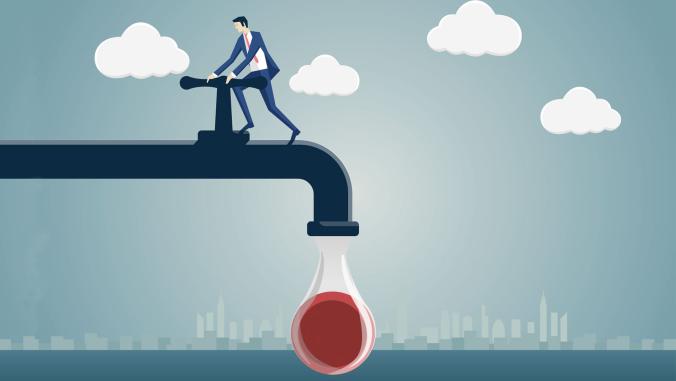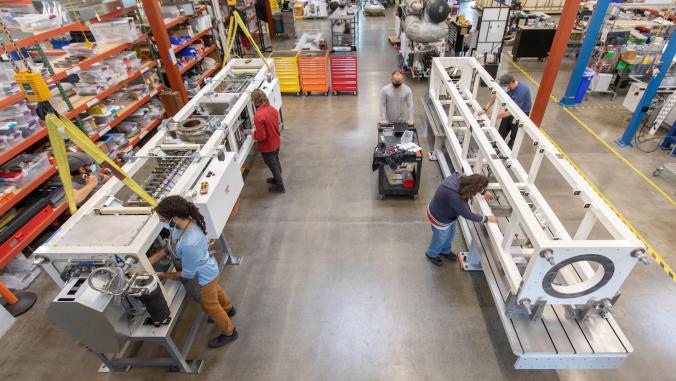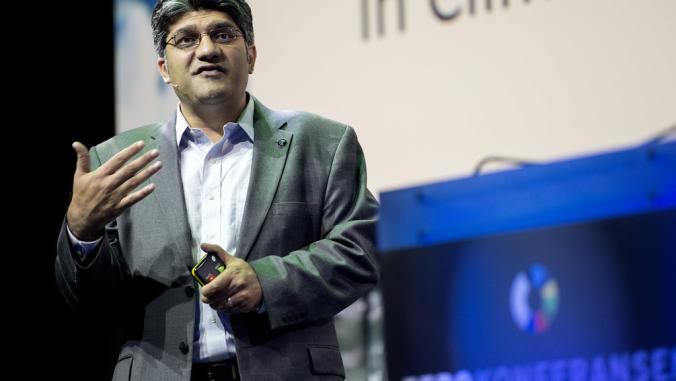How the ARPA-E 'Incubator' Helps Hatch Next-Gen Energy Projects
<p>Arun Majumdar, the director of Advanced Research Projects Agency-Energy, lays out the audacious goals and the tough budgetary realities of the U.S. Department of Energy unit that's best known by its acronym ARPA-E.</p>

Short for Advanced Research Projects Agency-Energy, ARPA-E is modeled after the more familiar DARPA (Defense Advanced Research Projects Agency). Famously, DARPA invented and incubated the proto-Internet nearly 50 (!) years ago and stands out as a success story, repeated by the left and right alike, of government investment in basic technologies.
ARPA-E shares more than just the familiar -- if awkward -- acronym from its predecessor. (I guess EARPA just sounded a little silly.) Like DARPA's approach, ARPA-E is curating very early stage technologies, picking and cultivating those that could, it hopes, deliver Internet-scale disruptive benefits to the energy economy.
Even in the best of times, such an audacious goal is a serious challenge. But as Arun Majumdar, ARPA-E's director, told the attendees at the State of Green Business Forum last week in Washington, D.C., the energy innovation incubator also faces tough budgetary realities, despite promising early successes.
"Our goal by statute is to look for technologies that don't exist in the energy markets today … These are disruptive, not incremental, technologies," Majumdar said.
Like his boss Steven Chu, Majumdar has a science pedigree from the West Coast's energy-technology-policy hothouse at University California at Berkeley and nearby Lawrence Livermore National Lab.
And like his boss, Majumdar arrived in D.C. to find strong support for energy research. The agency's first year budget, at $400 million, was divvied up and deployed into about 400 projects across six research areas (more on those below) in short order.
But now, with that foundation laid, ARPA-E's funding for both fiscal year 2011 ($300 million requested) and 2012 ($550 million requested) is stalled in the fight over the budget. With its extant funds committed and despite bipartisan support, "we're in a holding pattern," said Majumdar.
Last month, the agency announced that six of projects it had funded generated private investment. The half dozen projects that originally received a total of $23.6 million in seed funding from ARPA-E attracted another nearly $100 million in outside private capital investment, Majumdar said.
About one-third of first year funding went to university projects, 40 percent to small businesses, another 5 percent or so to national labs, and the remainder to corporate R&D projects. For the smaller projects, "this is a huge boost ... These scientists cannot go to the bank or to venture capitalist because the projects are often pre-prototype," Majumdar explained.
Majumdar wouldn't name favorites among the projects ARPA-E has backed in its first year, but he highlighted a few areas: electric vehicle batteries, stationary grid-scale energy storage and air conditioning. In addition to those areas, the agency is also funding research in carbon capture, electro-magentic materials, alternative fuels and others.
Out of the 400 deals, 120 went to new storage technology for transportation and grid-level storage. "In transportation, we're looking at making the e-car cheaper and longer range than the gas car," said Majumdar. The target ARPA-E is asking researchers to aim for: batteries at about twice the energy density of today's lithium-ion cells -- and about a fifth of the price.
In grid-level storage, ARPA-E hopes to cultivate energy storage systems to solve the problem of renewable energy's intermittency. Majumdar explained the agency is looking for systems that could deliver storage at less than $100 per kilowatt hour of capacity. "Then the levelized cost of renewables would fall to 2c-2.5c per kilowatt hour," he said. "That's the cost of pumped hydro today."
In air conditioning, ARPA-E is after similarly big leaps. While heating and cooling comprise up to half of the energy load of a building, the technology in an air conditioner hasn't fundamentally changed from the method first introduced a century ago. Technical assessments suggest the theoretical maximum efficiency of air conditioners could be tenfold better than today. ARPA-E is asking researchers to achieve half of those potential gains.
Photos by Goodwin Ogbuehi, http://flickr.com/photos/yoshikatsu





